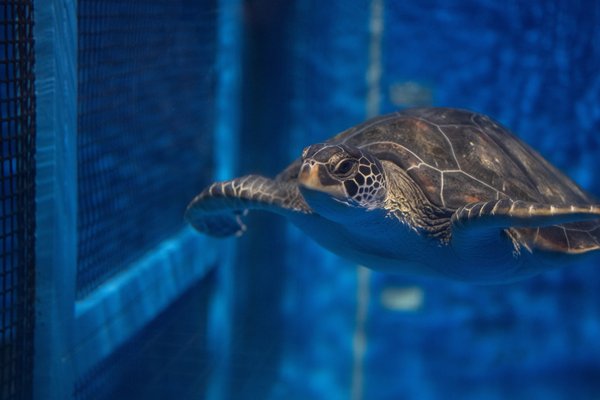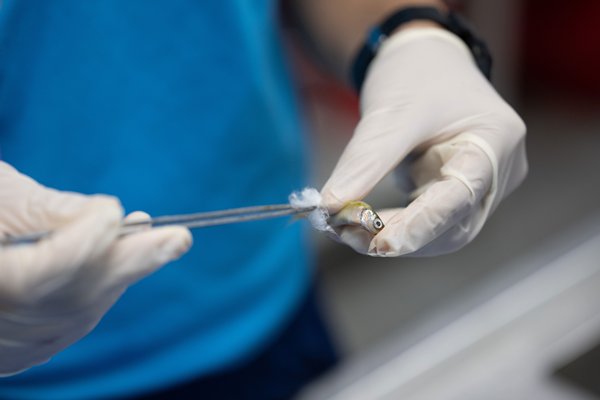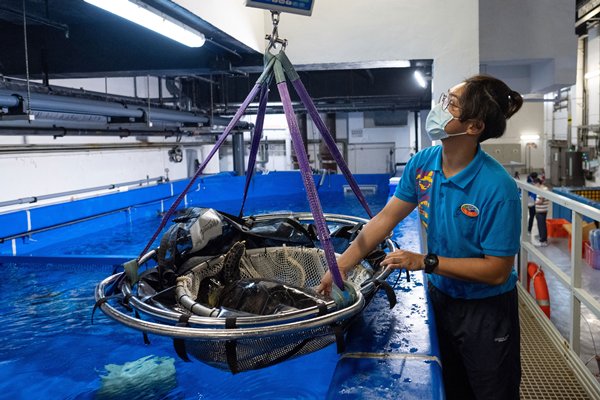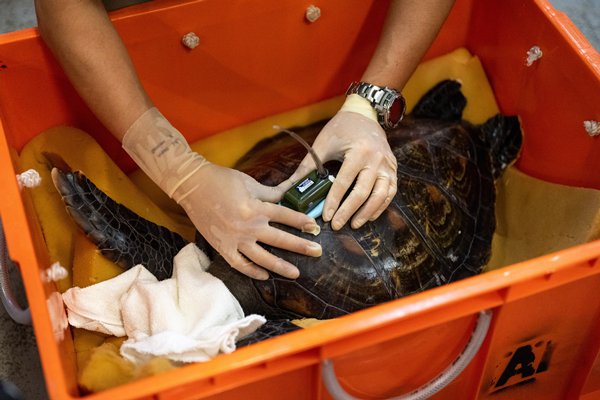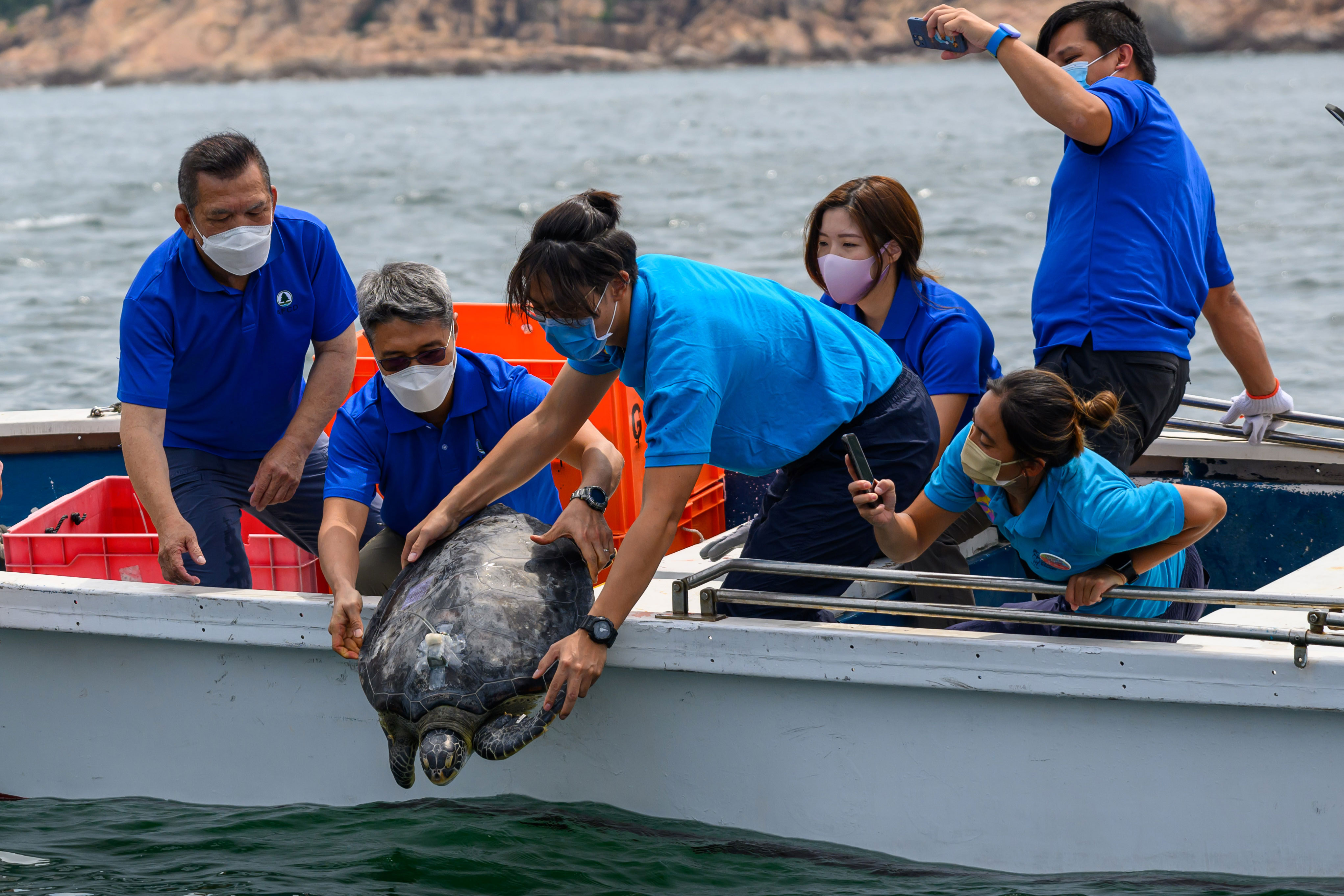Rescued green turtles returned to sea
Three green sea turtles rescued by the Agriculture, Fisheries & Conservation Department, and placed in Ocean Park's care, were released into the sea today. Officials used the occasion to remind people not to throw rubbish in the ocean.
Green turtles are omnivores; they not only eat fish, but also jellyfish and seaweed. They switch from being omnivores to vegetarians when they are adults.
Ocean Park Animal Care Specialist Cola Cheung, who was responsible for taking care of the green turtles, noted the animals eat garbage by mistake which can injure them.
Mr Cheung said: “Jellyfish and seaweed look similar to plastic bags and discarded fishing nets, so the turtles may eat these by mistake and end up hurting their gut.”
Rehabilitating rescued turtles
Since 2000, Ocean Park and the Agriculture, Fisheries & Conservation Department have been working together to rescue and rehabilitate green turtles which are then released back into the sea when appropriate.
Mr Cheung has taken care of 50 green sea turtles rescued by the Agriculture, Fisheries & Conservation Department. Each green turtle had different needs when it was sent to Ocean Park. He and his teammates take good care of them.
“Center” the green turtle was found in a weak state by the department during an inspection near Tolo Harbour. A veterinarian discovered that “Center” had a serious bacterial infection on the left flipper. Cola and his colleagues added antibiotics to the turtle’s food as a remedy.
“During feeding we would deliberately place the food on the left so it would use the left flipper more to push or tear the food apart, providing it with some kind of physiotherapy.”
“Roller” was rescued when an angler at Yung Shue O in Sai Kung reported that it might have swallowed fishing hooks.
“We saw two hooks in its gut during a CT scan. We wanted the hooks to come out naturally, so we added some cotton balls to its food. We hoped the cotton would get caught up in the tip of the hooks. This would prevent them from piercing Roller’s intestine while encouraging muscle contractions to push the food through the gut. Eventually, the two hooks came out successfully.”
“Skateboard” was found in April after a report stated that a green turtle was being kept on a raft in Sai Kung, so it was rescued. “Skateboard” arrived at Ocean Park with no surface scars, but its front flippers were different.
Data collection, better protection
Agriculture, Fisheries & Conservation Department Fauna Conservation Officer (Enforcement) Tony Chan said: “Green turtles are an endangered species and their numbers are dwindling. The department hopes to save injured green turtles so they can continue to survive and reproduce.
“Before we release them into the sea, each turtle will be tagged with a microchip and Inconel tag for future identification. Satellite transmitters are also attached to their back to track their oceanic movement and migration route. Data are collected for developing effective measures to protect the green turtles.”
To strengthen the protection of green turtles, Sham Wan on Lamma Island including the sea inlet adjoining the beach, is closed off from April to October each year.
“The green turtle is the only sea turtle species that nests in Hong Kong, and the sandy beach at Sham Wan on Lamma Island is the only site where green turtles nest from time to time. They are particularly sensitive to human disturbance, which may frighten them and cause them to abandon nesting.”
Mr Chan appealed to the public not to throw garbage in the ocean in an effort to reduce the chance of green turtles being injured from eating the discarded rubbish. Plus, rubbish in the sea can also deter turtles from laying their eggs.
Everyone can do their part in protecting green turtles and the ocean by reducing waste. It is never too late to start.
